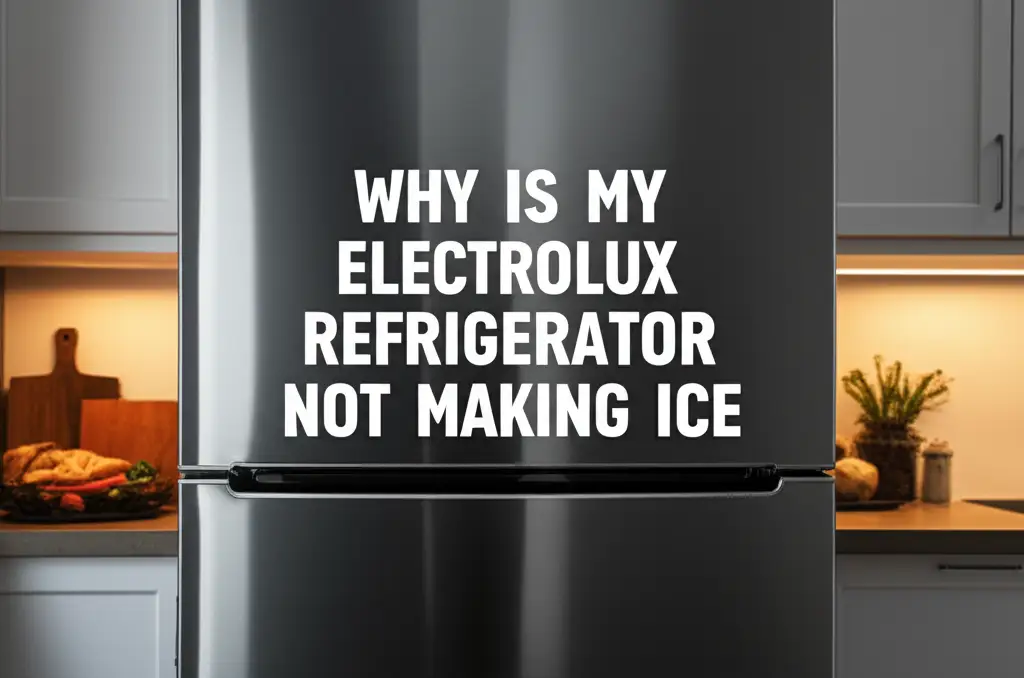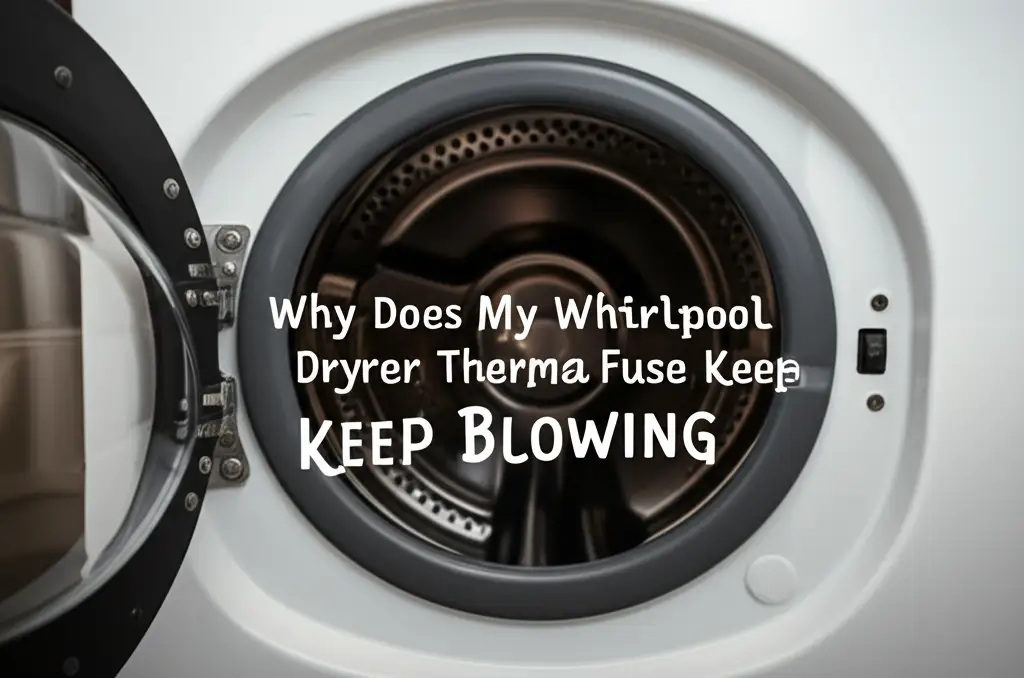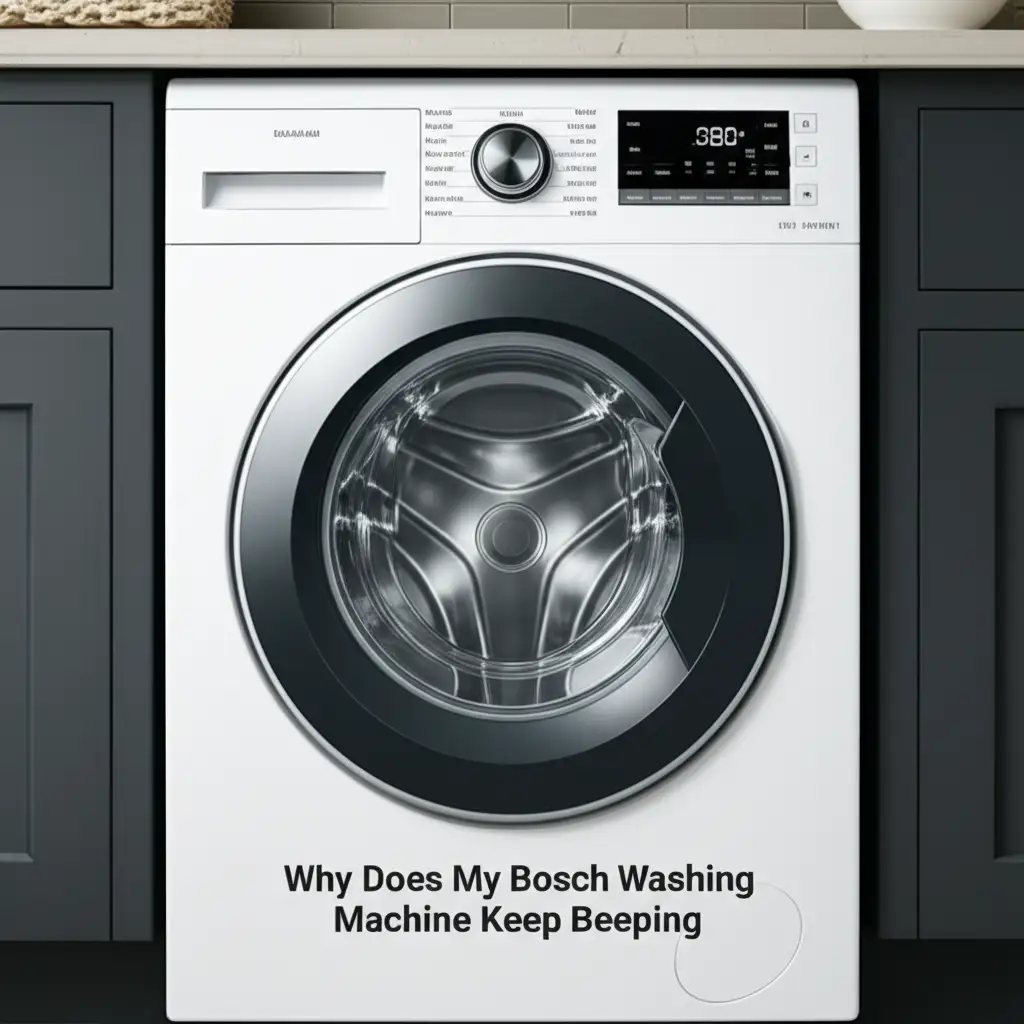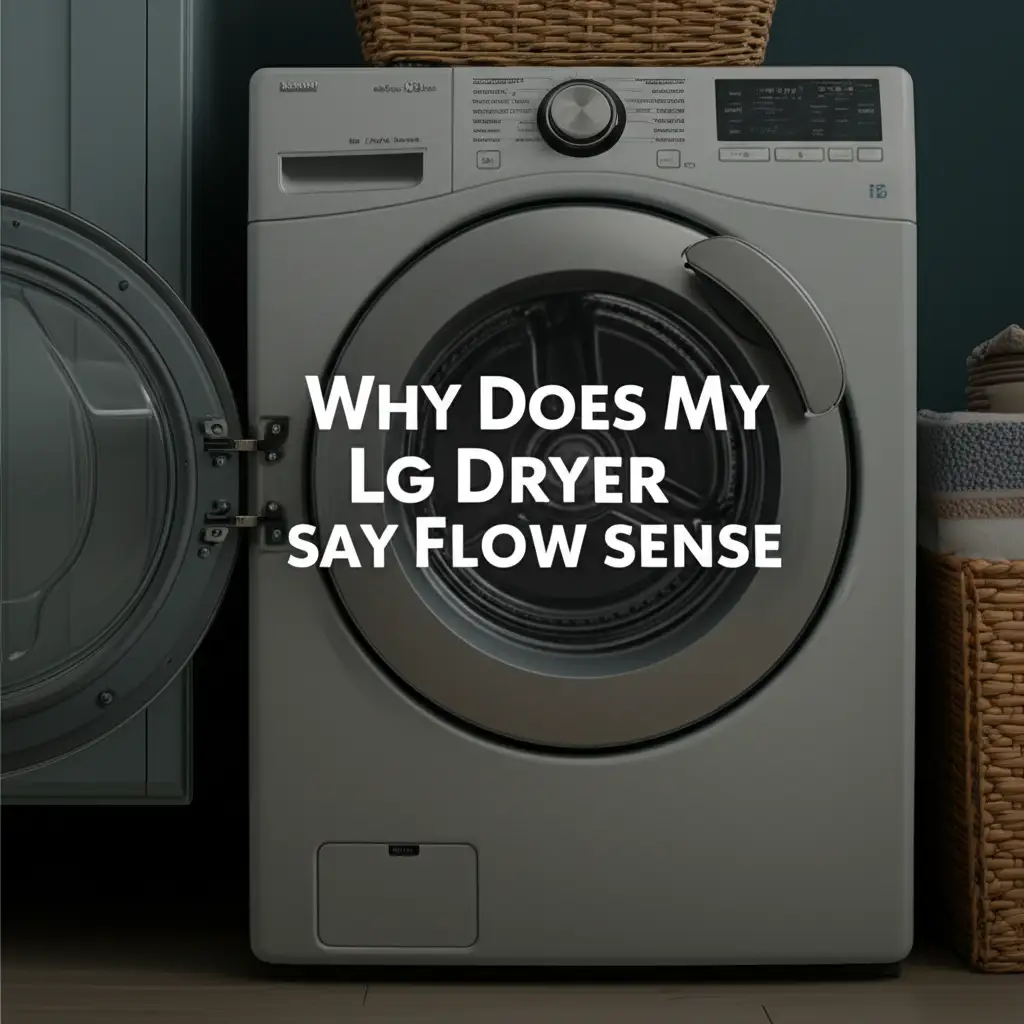· Todd Martin · Appliance Troubleshooting · 20 min read
Why Does My Kitchenaid Refrigerator Stop Making Ice
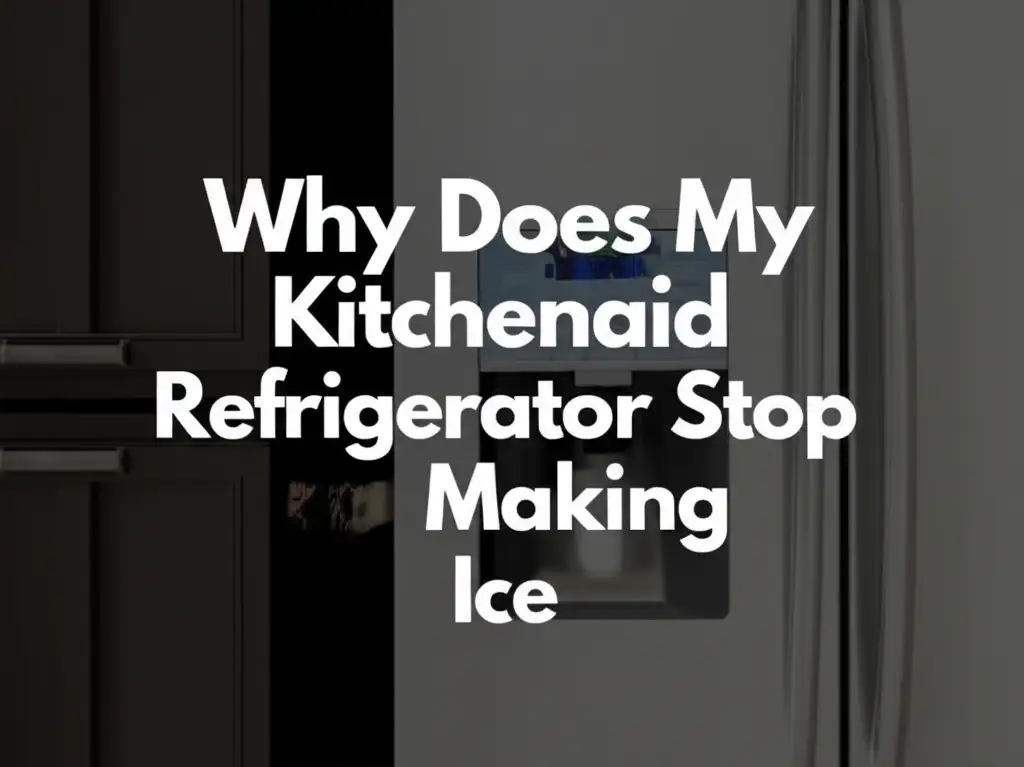
KitchenAid Refrigerator Not Making Ice? Common Fixes
There is nothing quite like opening your freezer, reaching for some ice, and finding an empty bin. It is a common problem, and it can be frustrating, especially when you own a reliable appliance like a KitchenAid refrigerator. Many things can cause your KitchenAid refrigerator to stop making ice. From simple fixes like a clogged water filter to more complex issues with the ice maker unit itself, understanding these problems helps you find a solution. We will walk through the most common reasons and provide clear steps to get your ice maker working again. This guide helps you diagnose and fix the problem, ensuring you have ice for your drinks.
Takeaway
- Check the Water Supply: Ensure the water line is connected and the shut-off valve is open. A restricted water flow prevents ice production.
- Replace the Water Filter: A clogged filter is a frequent culprit. Replace it every six months to one year for optimal water flow.
- Verify Freezer Temperature: The freezer must be cold enough (0-5°F or -18 to -15°C) for the ice maker to cycle properly.
- Inspect the Ice Maker Mechanism: Look for blockages in the ice chute or a stuck shut-off arm. Resetting the ice maker can often resolve minor glitches.
- Address Water Inlet Valve Issues: A faulty water inlet valve will not allow water into the ice maker, preventing it from filling.
- Examine the Door Switch: The ice maker may not work if the refrigerator door switch is faulty, as it senses if the door is open or closed.
- Consider the Control Board: Sometimes, the main control board or ice maker control board fails, requiring professional diagnosis and replacement.
A KitchenAid refrigerator typically stops making ice due to a problem with its water supply, such as a clogged water filter or a closed water valve. It could also be caused by an incorrect freezer temperature, a mechanical issue with the ice maker unit, or a faulty component like the water inlet valve or a sensor. Simple troubleshooting steps often resolve these issues quickly.
Understanding Your KitchenAid Ice Maker
Your KitchenAid refrigerator’s ice maker is a smart system. It needs water, cold temperatures, and electricity to make ice. The ice maker fills a mold with water, freezes it, and then releases the ice cubes into a bin. If any part of this process fails, your refrigerator stops making ice.
KitchenAid ice makers are reliable but can have issues. Common problems include water flow restrictions or temperature problems. Knowing how your ice maker works helps you troubleshoot. We will explore simple steps to diagnose the problem.
How an Ice Maker Works
An ice maker has several parts that work together. First, a water line brings water from your home’s supply. This water goes through a filter, then to a water inlet valve. The valve opens and closes to let water into the ice maker mold.
Inside the ice maker, a thermostat or sensor checks the temperature. Once the water freezes, a heating element warms the mold slightly. This allows the ice cubes to release. A motor then turns a tray or ejector arm, pushing the ice into the bin.
Common Ice Maker Components
Several key parts must work for ice production. The water filter cleans the water before it enters the ice maker. The water inlet valve controls the water flow into the ice maker. The ice maker assembly includes the mold, motor, and ejector arm.
A temperature sensor tells the ice maker when ice is frozen. The ice maker shut-off arm signals if the ice bin is full. If any of these parts fail or get blocked, your KitchenAid refrigerator will not make ice. We will look at each component in more detail.
Water Supply Issues: The First Check
When your KitchenAid refrigerator stops making ice, the water supply is the first place to look. No water means no ice. It sounds simple, but a few things can go wrong here. We can easily check these issues.
First, make sure the water shut-off valve is fully open. This valve is often behind the refrigerator or under the sink. If it is closed, water cannot reach the ice maker. I have seen many people forget this step after moving their refrigerator.
Check the Water Shut-Off Valve
The water shut-off valve controls water flow to your refrigerator. Find the valve on the water line connected to the back of your refrigerator. It might be a small knob or a lever. Turn it fully counter-clockwise to open it.
If the valve is partially closed, water flow will be too weak. This can cause small or malformed ice cubes. Ensure the valve is open all the way for proper water pressure. A weak water flow can also lead to air in the water line, preventing ice production.
Inspect the Water Line
The water line is a thin tube that brings water to the refrigerator. It runs from the shut-off valve to the back of the appliance. Check the line for kinks, bends, or damage. A kinked line blocks water flow completely.
I once found a refrigerator pushed too close to the wall, crimping the line. Gently pull the refrigerator out and straighten any bends. Make sure nothing is pressing against the line. This simple check can save you a service call.
Frozen Water Line
Sometimes, the water line inside the freezer can freeze. This happens if the freezer temperature is too low or if there is a slow drip. A frozen line completely blocks water from reaching the ice maker. You might notice your LG refrigerator not making ice but water works.
To fix this, first unplug the refrigerator. Then, use a hairdryer on a low setting to gently warm the frozen line. Do not use high heat. You can also leave the freezer door open for a few hours. This allows the ice to melt naturally. After it melts, plug the refrigerator back in. Give it time to cool and start making ice.
Water Filter Problems: A Common Culprit
A clogged water filter is one of the most common reasons a KitchenAid refrigerator stops making ice. The filter cleans your water, removing impurities. Over time, it collects these particles and can become blocked. When the filter is clogged, water cannot flow properly to the ice maker.
Many people overlook the water filter because it still dispenses water from the door. However, the ice maker often has a lower water pressure requirement. A partially clogged filter might still allow some water flow for drinking but not enough for the ice maker to fill its tray. I always tell my clients to check this first.
When to Replace Your Water Filter
KitchenAid recommends replacing your water filter every six months. This timeframe can vary depending on your water quality and usage. If your home has hard water or you use the ice maker often, you might need to change it more frequently. Ignoring this maintenance step often leads to ice maker issues.
Many KitchenAid models have an indicator light that tells you when to change the filter. Do not wait for the water flow to slow down. Regular replacement ensures clean water and proper ice production. It is a simple and inexpensive fix that prevents many problems.
How to Replace the Water Filter
Replacing the water filter is usually very easy. Most KitchenAid filters are twist-in or push-in types. You can find the filter inside the refrigerator compartment or in the grille at the bottom. Consult your refrigerator’s manual for its exact location and instructions.
First, buy the correct replacement filter for your KitchenAid model. Turn the old filter counter-clockwise to remove it. Some water might drip out, so have a towel ready. Insert the new filter and turn it clockwise until it locks into place. After replacing, run a few gallons of water through the dispenser. This purges air from the lines and flushes any loose carbon particles.
Issues After Filter Replacement
Sometimes, the ice maker does not start making ice immediately after a filter change. This is normal. It can take up to 24 hours for the ice maker to refill and cycle properly. Be patient and wait for it to restart. If it still does not work, check for trapped air in the water line.
To remove air, hold the water dispenser lever down for a few minutes. This flushes the line. You might hear bubbling sounds as air is expelled. Continue until water flows smoothly. This step is important for getting the ice maker back on track.
Freezer Temperature Settings
The freezer temperature plays a crucial role in ice production. If your freezer is too warm, the water in the ice maker mold will not freeze fast enough. This prevents the ice maker from cycling. A KitchenAid ice maker needs a consistent, cold environment to work correctly. It is a common reason why a GE refrigerator takes so long to make ice, or stops entirely.
I always recommend checking your freezer temperature with an appliance thermometer. Do not just rely on the setting on your refrigerator display. The display might show one temperature, but the actual temperature inside the freezer could be different. This small discrepancy can affect ice production.
Ideal Temperature Range
For optimal ice maker performance, your freezer temperature should be between 0°F and 5°F (-18°C and -15°C). Temperatures above 5°F will cause slow freezing or no freezing at all. The ice maker needs to sense fully frozen cubes before it attempts to harvest them. If cubes are slushy, the cycle will not complete.
If the freezer is too cold, below 0°F, it can also cause problems. Very cold temperatures can sometimes lead to the water line freezing. This creates a blockage and stops water flow to the ice maker. Aim for the sweet spot within the recommended range.
Adjusting Freezer Temperature
Locate your refrigerator’s temperature controls. These are usually on the control panel inside the refrigerator or on the door. Adjust the freezer temperature setting to the recommended range. If it is too warm, lower the temperature. If it seems too cold, raise it slightly.
After adjusting the temperature, give your refrigerator time to stabilize. It can take several hours, or even a full day, for the temperature to settle. Check the temperature again with your thermometer after 12-24 hours. Once the temperature is stable, the ice maker should begin its cycle.
Common Issues with Temperature
Warm freezer temperatures can stem from several issues beyond just the setting. A dirty condenser coil can make the refrigerator work harder, leading to warmer temperatures. The condenser coils are usually at the bottom of the refrigerator. Clean them with a vacuum and a brush.
A faulty door gasket can let warm air into the freezer. Check the door gasket for tears or gaps. If you can slide a dollar bill easily between the door and the frame when the door is closed, the seal is bad. A warm freezer due to a bad seal directly impacts ice maker function.
Ice Maker Mechanism Issues
Even with proper water supply and temperature, your KitchenAid ice maker might still fail. This often points to a problem with the ice maker mechanism itself. The ice maker is a mechanical device with moving parts. These parts can jam, break, or simply get stuck.
It is common for ice cubes to get stuck in the mold or chute. Sometimes, the ice maker’s shut-off arm gets in the wrong position. These are simple mechanical issues that you can often fix yourself. I always check these mechanical parts first before considering bigger problems.
Stuck Ice Maker Arm
Many KitchenAid ice makers have a metal shut-off arm. This arm senses when the ice bin is full. When the arm is raised, it signals the ice maker to stop production. If the arm is accidentally stuck in the raised position, the ice maker will think the bin is full, even if it is empty.
Check the ice maker bin and ensure the shut-off arm is in the down position. Sometimes, a stray ice cube or debris can push the arm up. Simply push the arm down to its correct position. This is a common and easy fix.
Blocked Ice Chute or Ejector
Ice cubes can sometimes get jammed in the ice maker’s chute or around the ejector blades. This prevents new ice from dropping into the bin. You might hear the ice maker trying to cycle but no ice comes out. Clear any visible ice blockages.
Unplug the refrigerator first for safety. Remove the ice bin. Look into the ice maker unit and the chute. Use a plastic utensil or your hand to carefully remove any jammed ice or debris. Never use sharp objects that could damage the components. After clearing, plug the refrigerator back in.
Ice Maker Reset
Sometimes, the ice maker’s electronic controls just need a reset. This can clear minor glitches or errors. The process for resetting an ice maker varies by KitchenAid model. Some have a reset button, while others require a power cycle.
Look for a small red or black reset button on the side or bottom of the ice maker assembly. Press and hold it for a few seconds. If there is no button, unplug the refrigerator for 5-10 minutes. This fully removes power and forces a reset. Plug it back in and give it time to restart its cycle. This often resolves unexplained stoppages.
Cleaning the Ice Maker
Over time, mineral deposits or mold can build up in the ice maker. This can affect its operation and ice quality. Regular cleaning is a good maintenance practice. It helps prevent future issues and ensures clean ice.
To clean, unplug the refrigerator. Remove the ice maker bin and empty it. You can wash the bin with warm, soapy water. For the ice maker unit itself, use a damp cloth. Avoid harsh chemicals. Some ice makers can be removed for more thorough cleaning. You can learn more about how to clean your refrigerator ice maker effectively. After cleaning, let everything dry completely before reassembling.
Water Inlet Valve Malfunction
The water inlet valve is a critical component for ice production. This valve is an electrically operated device. It opens to allow water into the ice maker and closes when enough water has entered. If this valve fails, water will not reach the ice maker mold. You may find that your refrigerator is not making ice, but water works through the dispenser, meaning the main water supply is fine, but the ice maker isn’t receiving it. This is a common issue, even with other brands like a Whirlpool refrigerator not making ice but water works.
A faulty water inlet valve can manifest in a few ways. It might not open at all, leading to no water in the ice mold. Or, it might open partially, causing the ice maker to produce small or misshapen cubes. Sometimes, the valve can get stuck open, leading to overfilling and a frozen ice bin.
How to Diagnose a Faulty Valve
First, unplug your KitchenAid refrigerator for safety. Locate the water inlet valve at the back of the refrigerator, usually near the bottom. It connects to the main water supply line and a smaller line leading to the ice maker. The valve has electrical terminals where wires connect.
A common sign of a faulty valve is a humming sound without water entering the ice maker. You can use a multimeter to test the valve’s solenoid for continuity. If there is no continuity, the solenoid is bad, and the valve needs replacement. This test requires some technical skill.
Checking Water Pressure
The water inlet valve needs sufficient water pressure to operate correctly. If your home’s water pressure is too low, the valve might not open fully. This results in slow or no water filling the ice maker. The required pressure is usually between 20 and 120 psi.
You can test your home’s water pressure with a pressure gauge. Attach it to an outdoor spigot or laundry tub faucet. If the pressure is too low, it is a whole-house plumbing issue. Contact a plumber if your household water pressure is consistently low.
Replacing the Water Inlet Valve
If you confirm the water inlet valve is faulty, it needs replacement. This is a more involved repair than changing a filter. First, shut off the water supply to the refrigerator. Unplug the refrigerator from the wall outlet. Remove the screws holding the access panel at the back.
Disconnect the water lines from the old valve. Carefully remove the electrical connections. Install the new valve, reconnecting the water lines and electrical wires. Make sure all connections are tight to prevent leaks. Replace the access panel, turn on the water supply, and plug in the refrigerator. Wait for the ice maker to cycle.
Defrost System Failures
Your refrigerator’s defrost system prevents ice buildup on the evaporator coils. If this system fails, too much frost can accumulate. This frost can block the airflow to the freezer. It also covers the evaporator coils, which absorb heat from the freezer. When these coils are covered, the freezer cannot get cold enough for proper ice production.
A faulty defrost system can lead to a gradual reduction in ice output. Eventually, your KitchenAid refrigerator will stop making ice completely. You might also notice frost buildup on the back wall of the freezer compartment. This problem is less obvious than a clogged water filter, but it is a critical one.
Components of the Defrost System
The defrost system consists of a few key parts. The defrost heater melts frost from the evaporator coils. The defrost thermostat or bimetal thermostat senses when the coils are too cold and turns on the heater. The defrost timer or adaptive defrost control board controls the defrost cycles.
If any of these components fail, the defrost cycle will not complete. The most common failures are the defrost heater or the defrost thermostat. A bad defrost timer or control board can also prevent the defrost cycle from starting.
Signs of a Defrost Problem
Beyond no ice, other signs point to a defrost system failure. You might see a thick layer of frost on the back wall of your freezer. Food inside the freezer might not be as frozen as it should be. The refrigerator section might also feel warmer than usual because of poor air circulation.
If you open the freezer and see significant ice buildup on the back panel, it is a strong indicator. This ice blocks the fan from circulating cold air. This leads to inefficient cooling and directly impacts ice maker performance.
Troubleshooting and Repair
Troubleshooting a defrost system requires some technical skills. First, unplug the refrigerator. Access the evaporator coils, usually behind a panel in the freezer. Look for heavy ice buildup. If there is a lot of ice, you can manually defrost the refrigerator. Remove all food and leave the doors open for 24-48 hours. Use towels to catch melting water.
Once defrosted, test the components. Use a multimeter to check the continuity of the defrost heater and defrost thermostat. A bad component will show no continuity. If any part is faulty, replace it. If you are unsure, calling a qualified appliance technician is the best option. These repairs can be complex.
Faulty Ice Maker Assembly or Control Board
If you have checked everything else—water supply, filter, temperature, and basic mechanism issues—the problem might be within the ice maker assembly itself or its electronic control board. The ice maker assembly contains the motor, ejector, and molds. Any of these parts can fail over time.
The control board sends electrical signals to all parts of the ice maker. It tells the water inlet valve when to open and the ejector arm when to turn. If the control board is faulty, it cannot properly manage the ice-making process. This prevents your KitchenAid refrigerator from producing ice.
Ice Maker Assembly Failure
The ice maker assembly is a self-contained unit. Its motor can wear out, or its gears can strip. The ejector blades might bend or break, preventing ice from being pushed out. The water fill sensor or thermostat within the assembly can also fail. If the sensor does not detect frozen ice, the unit will not cycle.
You can often observe the ice maker assembly for signs of failure. If it never tries to fill with water, or if the ejector arm does not move, it indicates a problem. Sometimes, you might hear a clicking sound but no action. If one part inside fails, often the entire assembly is replaced.
Testing the Ice Maker Module
Testing the ice maker module usually involves checking for proper voltage or conducting specific diagnostic cycles. Some KitchenAid models have a test button or sequence to force a cycle. Refer to your refrigerator’s service manual for specific instructions.
For instance, some models might have a small hole where you can insert a jumper wire to test the water fill cycle. This bypasses the temperature sensor and directly activates the water inlet valve. If water fills, the sensor is likely faulty. If no water fills, the module or valve itself is bad.
Control Board Issues
The ice maker control board is the brain of the operation. It receives input from sensors and sends commands to the various components. A power surge can damage it. Age and wear can also cause electronic components to fail.
Signs of a faulty control board include inconsistent ice production, erratic behavior, or no ice production at all without other clear reasons. If you have ruled out all other common issues, the control board becomes a likely suspect. Replacement usually involves unplugging the refrigerator and carefully swapping out the old board for a new one. This part can be expensive, so accurate diagnosis is key. For general refrigeration problems, learning why a GE refrigerator stopped making ice might offer additional insights common to different brands.
When to Call a Professional
While many ice maker issues are simple DIY fixes, some require a professional. If you have tested all the common problems and the ice maker still does not work, it might be time for expert help. Complex electrical issues, control board replacement, or sealed system problems are best left to trained technicians.
A professional can accurately diagnose the problem with specialized tools. They have access to genuine KitchenAid parts and can ensure the repair is done correctly. If your refrigerator is still under warranty, contact KitchenAid service. This can save you money and headaches in the long run.
Troubleshooting Specific KitchenAid Models (French Door, Side-by-Side)
KitchenAid refrigerators come in various designs, including French door and side-by-side models. While the core ice-making principles are similar, specific troubleshooting steps can differ. Understanding these variations helps you pinpoint the problem more effectively. For example, troubleshooting a KitchenAid French door refrigerator not making ice might involve looking at door dispenser wiring.
Each design has unique components or common failure points. I find it useful to know the specific model when diagnosing issues. This helps in locating parts and understanding the exact system. Always refer to your user manual for model-specific instructions.
French Door Refrigerator Ice Makers
Many KitchenAid French door models have the ice maker located in the fresh food section, specifically in the upper left corner. This design can sometimes lead to issues if the compartment does not stay cold enough. A faulty seal on the ice maker compartment door can allow warm air in.
- Check the Ice Maker Compartment Seal: Ensure the small door or cover for the ice maker compartment seals tightly. If it leaks cold air, it prevents proper freezing.
- Verify Ice Maker Fan: Some models have a small fan in this compartment to circulate cold air. If this fan fails, the ice maker area might not get cold enough.
- Dispenser Issues: If your French door model has a door dispenser, check the wiring for the dispenser. A broken wire might prevent the ice maker from getting power.
These specific checks are important for French door designs. The ice maker is not directly inside the freezer, making its environment crucial.
Side-by-Side Refrigerator Ice Makers
Side-by-side KitchenAid refrigerators typically have the ice maker located
- KitchenAid Refrigerator
- Ice Maker Repair
- Refrigerator Not Making Ice
- Appliance Troubleshooting
- KitchenAid Ice Maker Fix


